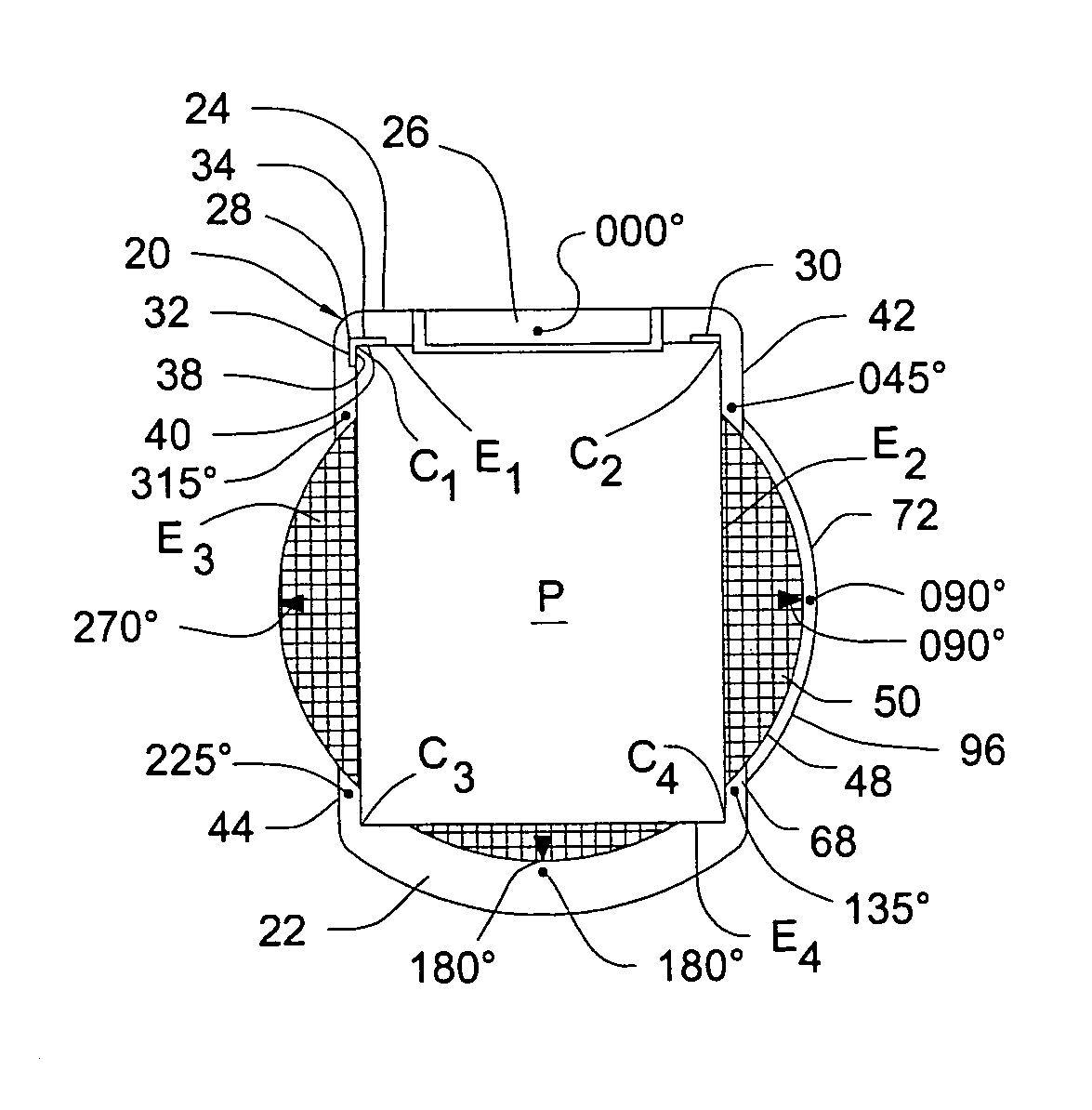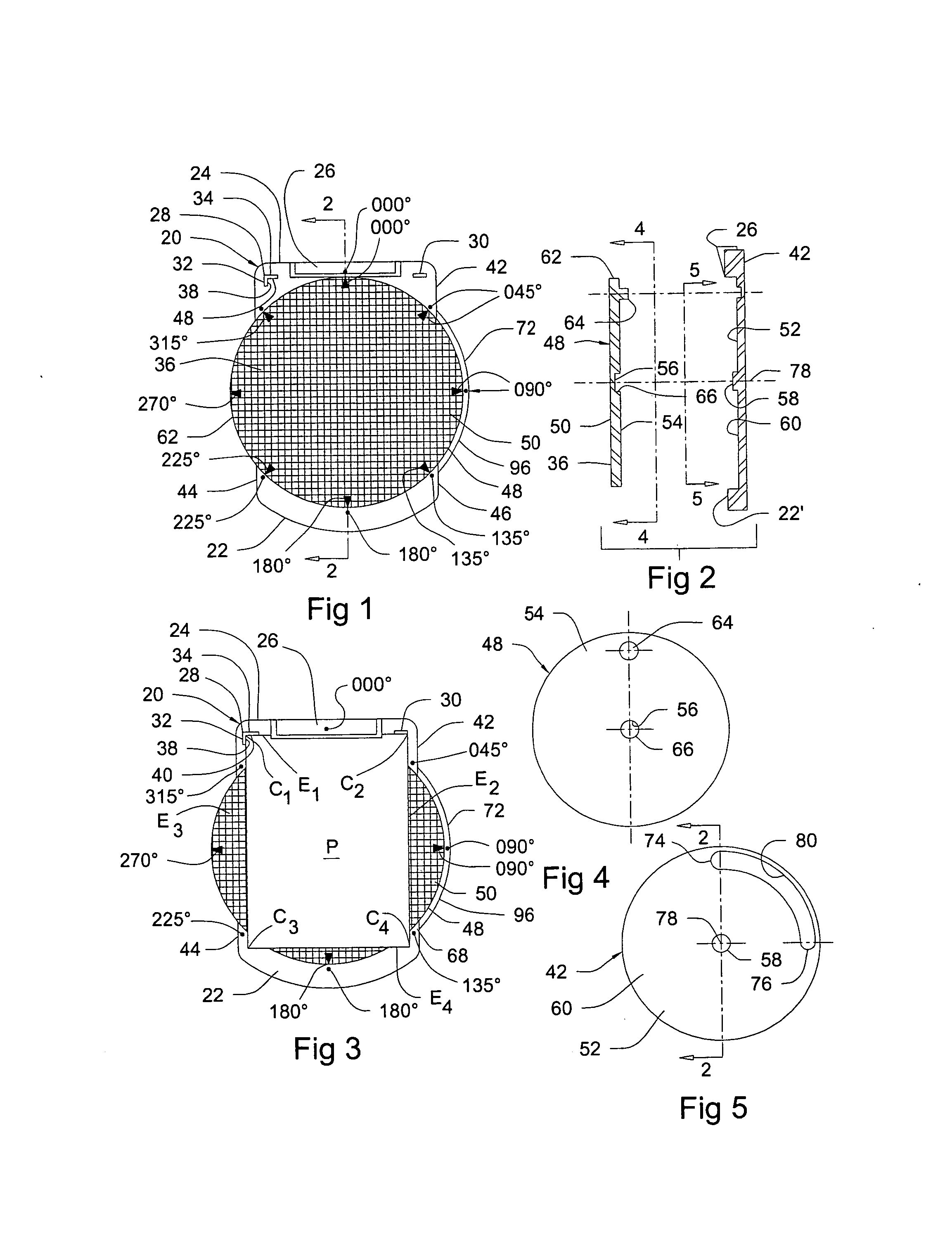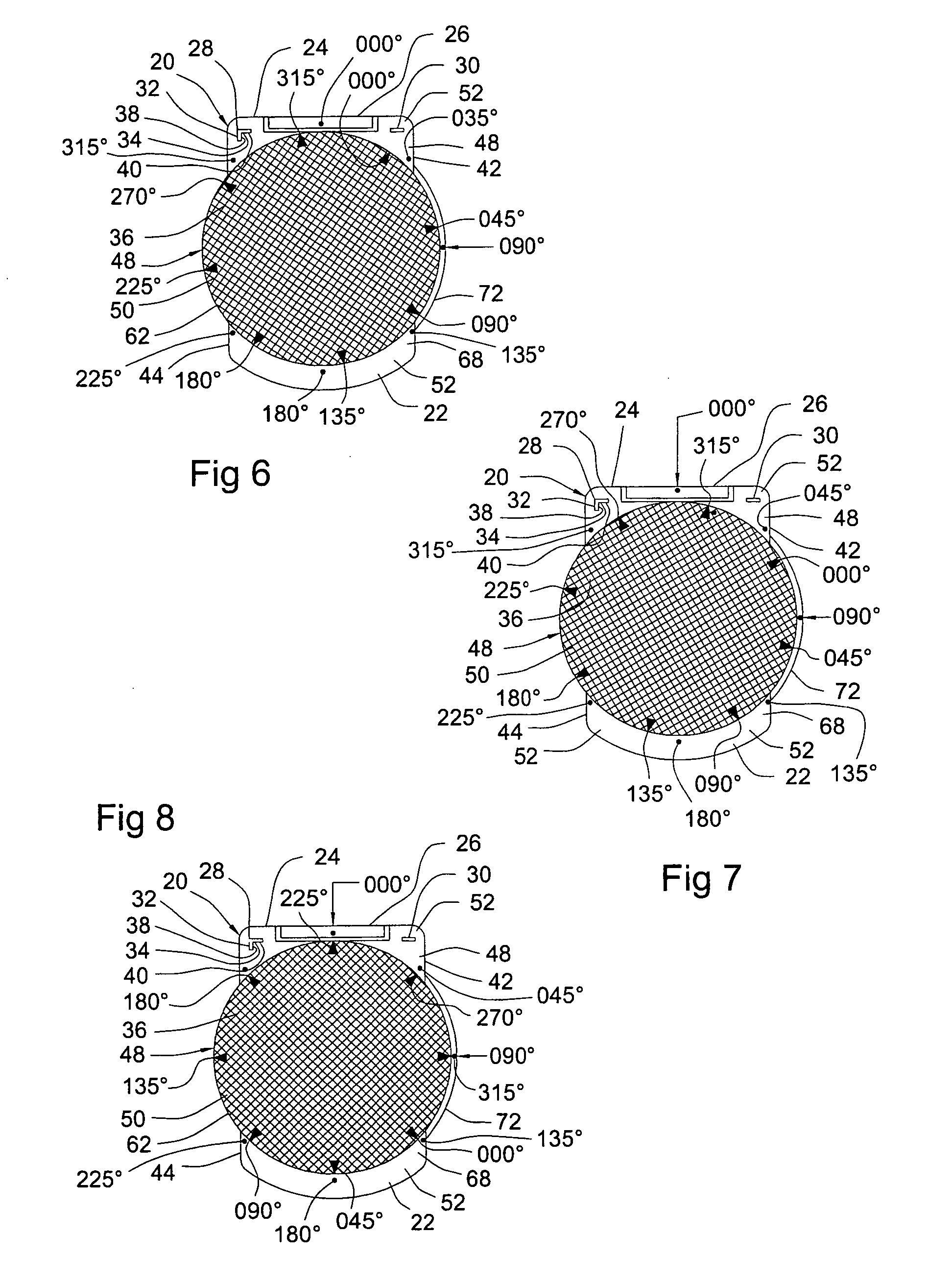Device for drawing lines on a sized sheet of paper and maintaining registration of the paper when it has been removed and is being replaced on the device
a technology for drawing lines and paper, applied in the field of devices, can solve the problems of inability to ensure the precise re-registration capability shown or suggested by phillips, the inability to conveniently or easily relocate the paper sheet precisely to the position, and the inability to return the paper sheet to the position without considerable difficulty, etc., and achieve the effect of heavier lines
- Summary
- Abstract
- Description
- Claims
- Application Information
AI Technical Summary
Benefits of technology
Problems solved by technology
Method used
Image
Examples
Embodiment Construction
[0026]There are two groups of disclosure of the invention of a clipboard assembly. Each of these groups has variations of the details of the invention that are contained in the disclosures belonging to each of these groups. They may be referred to at times as a group including a turntable feature, and a group that does not include the turntable feature of the invention. Thus the group including the turntable feature builds on the other group and yet is all a part of the same invention that provides improvements over the Phillips patent.
[0027]Both groups of disclosure of the invention use the feature of the same registration marks on a clipboard that are an integral part of the broad invention, and both groups use the textured groove patterns of the prior U.S. Pat. No. 3,384,964, issued on May 28, 1968 to R. E. Phillips, and may use other patterns as well. Therefore, both groups use inventive improvements to the disclosure of that patent that constitute various features of the invent...
PUM
 Login to View More
Login to View More Abstract
Description
Claims
Application Information
 Login to View More
Login to View More - R&D
- Intellectual Property
- Life Sciences
- Materials
- Tech Scout
- Unparalleled Data Quality
- Higher Quality Content
- 60% Fewer Hallucinations
Browse by: Latest US Patents, China's latest patents, Technical Efficacy Thesaurus, Application Domain, Technology Topic, Popular Technical Reports.
© 2025 PatSnap. All rights reserved.Legal|Privacy policy|Modern Slavery Act Transparency Statement|Sitemap|About US| Contact US: help@patsnap.com



